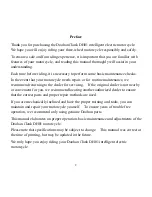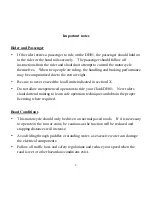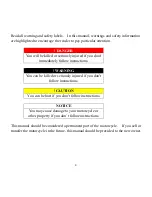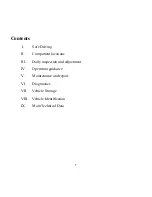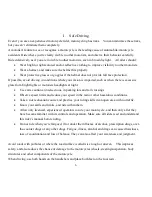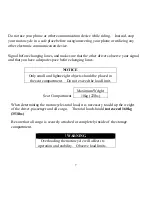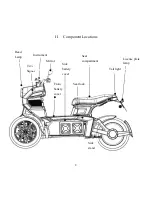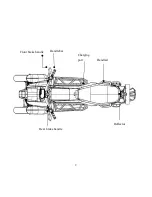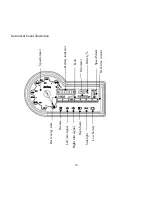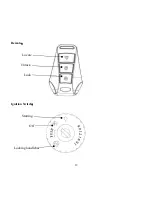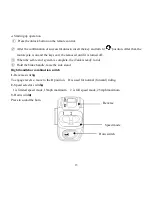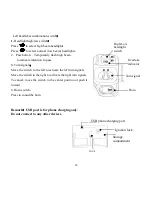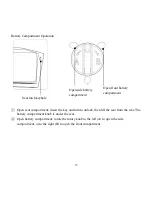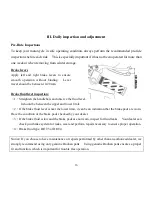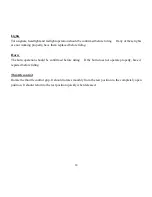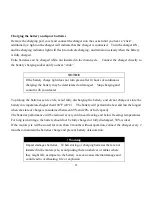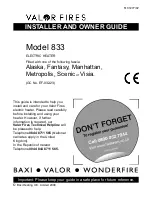
6
I. Safe Driving
Even if you are an experienced motorcycle rider, motorcycling has risks. You can minimize these risks,
but you can’t eliminate them completely.
A motorist's failure to see or recognize a motorcycle is the leading cause of automobile/motorcycle
accidents. Ride where you're clearly visible to other motorists, and observe their behavior carefully.
Ride defensively, as if you are invisible to other motorists, even in broad daylight. All riders should:
•
Wear bright or light-colored and/or reflective clothing to improve visibility to other motorists.
•
Wear a helmet, and make sure the helmet fits properly.
•
Wear protective glasses or goggles if the helmet does not provide full face protection.
If possible, avoid driving in conditions where your vision is impaired, such as when there is excessive
glare from bright lights or motorists headlights at night.
•
Use extra caution at intersections, in parking lots and rail crossings.
•
Observe speed limits and reduce your speed in the rain or other hazardous conditions.
•
Take a rider education course and practice your riding skills in an open area with no traffic.
•
Know your skills and limits, and ride within them.
•
Allow only licensed, experienced operators to ride your motorcycle, and then only after they
have become familiar with its controls and operation. Make sure all riders read and understand
this rider’s manual before riding.
•
Do not ride when you're fatigued, ill or under the influence of alcohol, prescription drugs, over-
the-counter drugs or any other drugs. Fatigue, illness, alcohol and drugs can cause drowsiness,
loss of coordination and loss of balance. They can also affect your awareness and judgment.
Avoid roads with potholes or where the road surface is otherwise rough or uneven. This improves
safety, and also reduces the chance of damage to the motorcycles wheels, steering/suspension, body
structures and other components of the motorcycle.
When driving, use both hands on the handlebars and place both feet on the foot rests.


